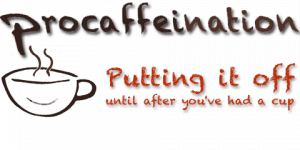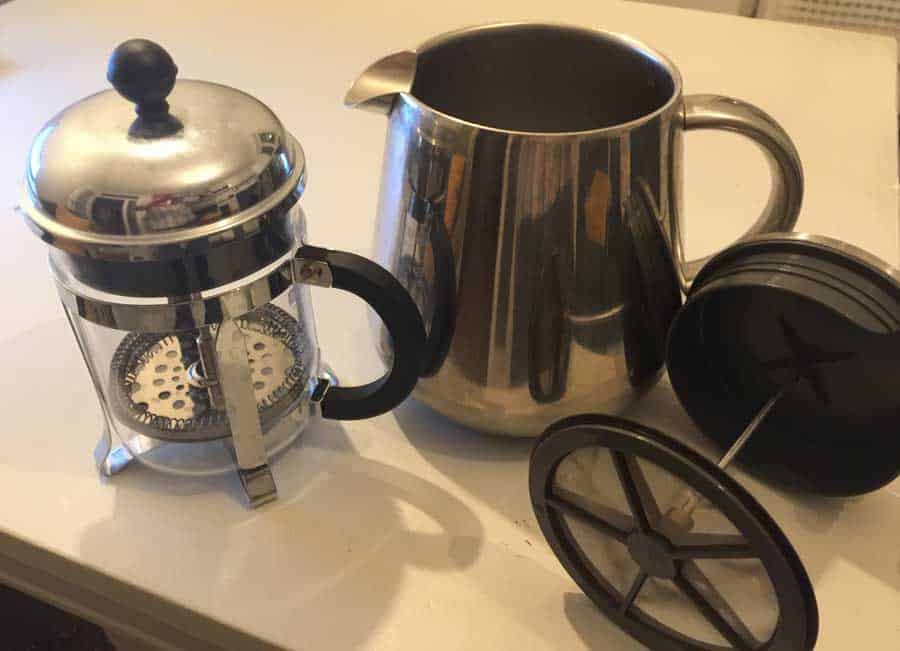
Many coffee aficionados swear by the French press. They go on and on about the rich, pure coffee flavors. They talk about the easy brewing. They swear it is the ONLY way to brew “real” coffee. The pots are readily available at almost every location that sells brewing equipment and they can be found in the kitchen of every Air B&B I have ever stayed in. There never seems to be any instruction booklet with them, though. The coffee lover coming face-to-face with a plunger pot for the first time has many questions and may find themselves with nowhere to turn. How many cups of water should I use? How many scoops of coffee? Luckily, Procaffeination has the answers for French press newbies and some tips to improve the cups of experienced hands, too.
To improve the likelihood that your coffee will be at least drinkable, remember the “Golden Ratio.” No matter what type of coffee brewing method you are using, two tablespoons of coffee per six fluid ounces of water will serve. If you prefer metric measurements, that works out to 11 grams of coffee per 200 milliliters of water.
How to Find the Right Amounts for YOUR French Press Pot
Now that you know the correct ratio, here is the foolproof method for determining the exact amount of water and the precise amount of coffee to use for your particular French press pot. You will need the pot, a method for measuring volume, such as a liquid measuring cup, and enough water to fill the pot.
If you want to go on a deep dive about water to coffee ratios, try The Proper Coffee to Water Ratio, American Style or The Proper Coffee to Water Ratio, Metric Style.
How much coffee do you intend to make? A full pot? Half a pot? Just a cup? Two cups? It doesn’t really matter except that we are going to determine what that means in terms of volume of water. Then we can then use that information to determine the correct amount of coffee.
You will need:
- The French press pot
- Your coffee cup or mug
- A liquid measuring cup (not a dry measuring cup)
- Something to write on
- Something to write with
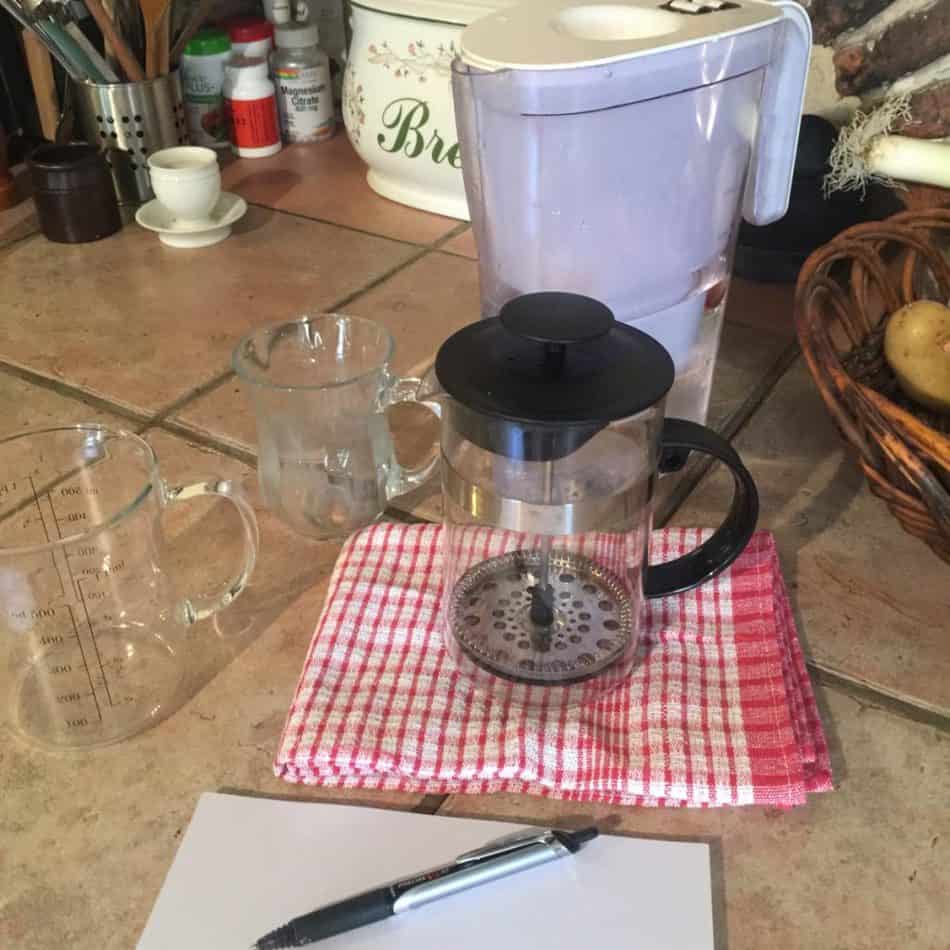
Making the Whole Pot
- Fill the pot with water to the point that you can still put the top and plunger in place and push it down about half an inch. Let’s just say a centimeter for our metric friends.
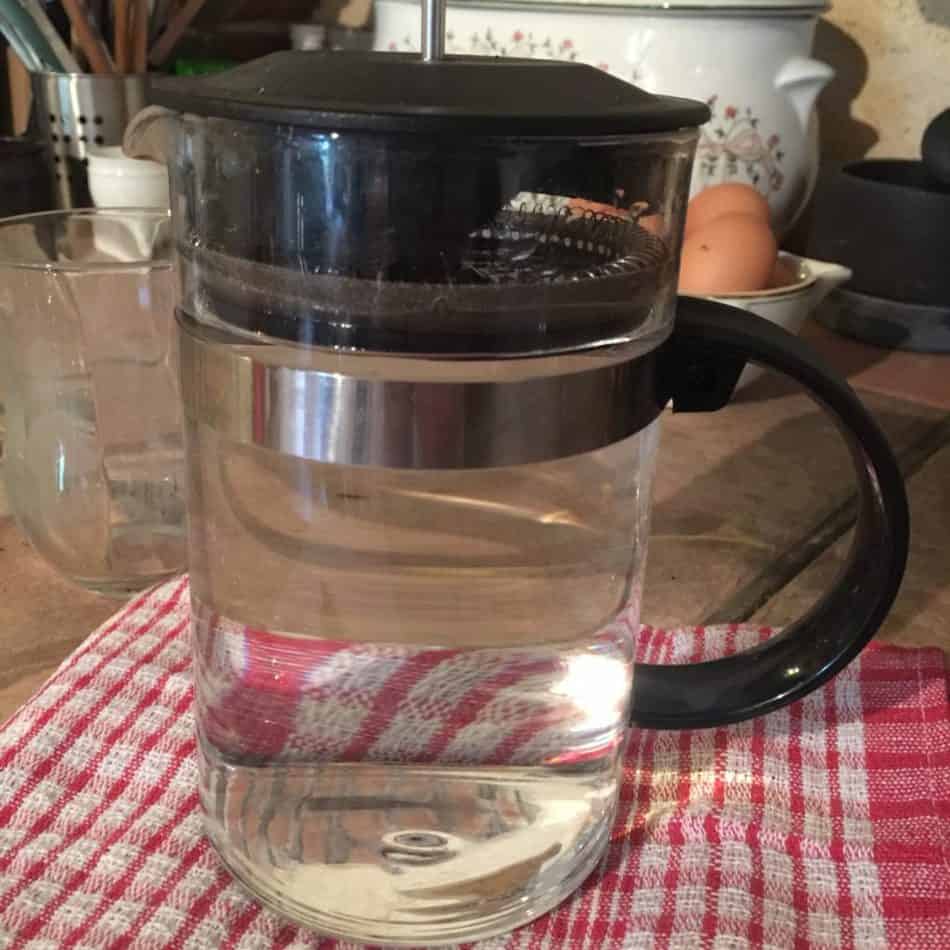
- Take the top off
- Pour the water into the measuring cup. If your cup is too small to contain all the water, you will have to do this in stages, keeping track of how much water you use.
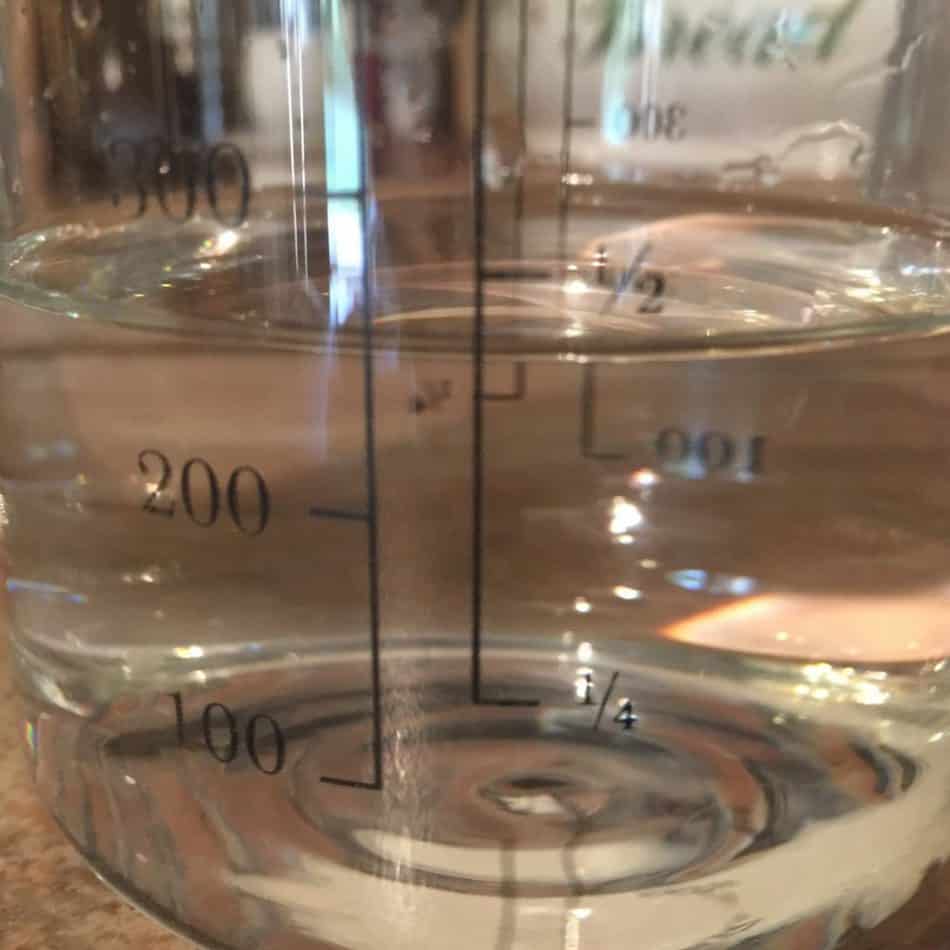
- Total up your pours and you will have a very accurate measurement of how much water your pot holds. Write that number down.
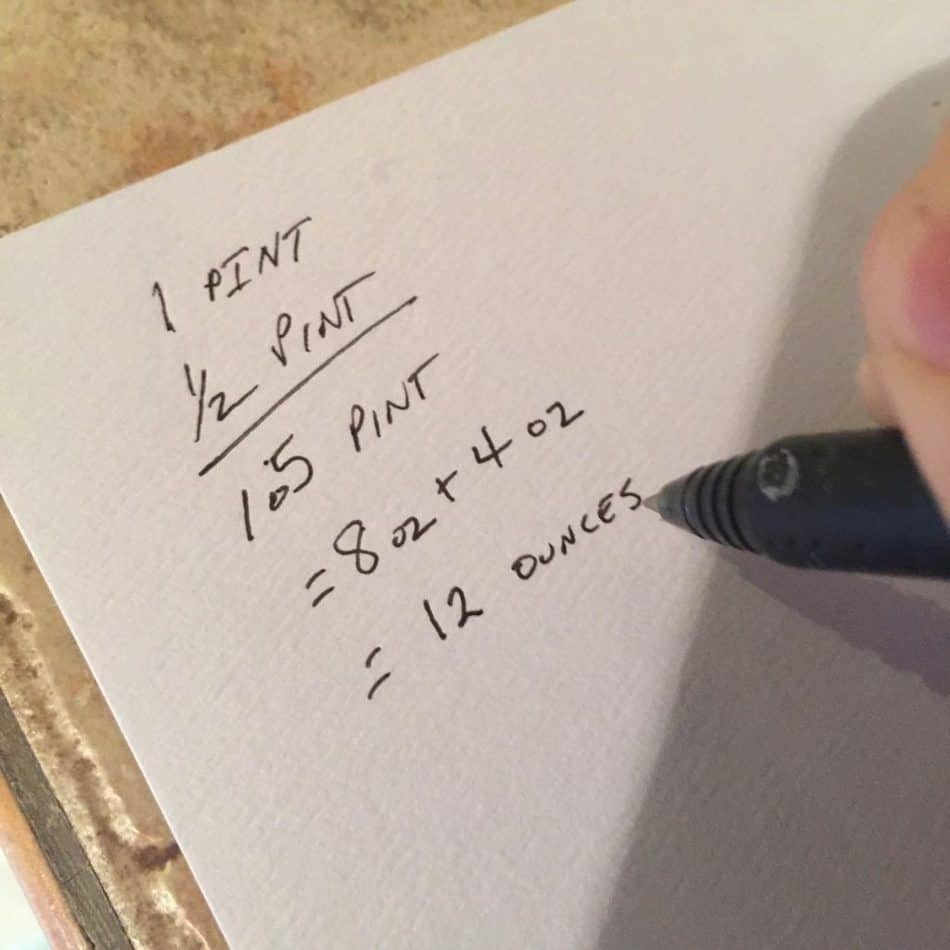
Making Less Than a Pot
Say you want to make a specific amount of coffee that is less than your French press will hold. For example, you just want to make two mugful’s, one for now and one for later. The steps to follow are very similar to the technique used in Making the Whole Pot. Fill your mug and pour it into the measuring cup. My regular mug holds 10 ounces, so if I only used two tablespoons of coffee for each mugful, I would end up with a very weak brew!
FYI: You might be surprised at the volume your cup holds
While a standard coffee cup is six fluid ounces (because it is historically based on the British teacup), you cannot tell how much your cup holds unless you measure it. In my cabinet alone, I have coffee cups that measure 2 ½ ounces (for espresso), 9 ounces, 10 ounces, and 12 ounces. And just to be thoroughly confusing, none of these is what you learned in school and what you might have noticed on the side of your measuring cup: that a US cup size is 8 ounces!

I say it again: unless you measure, you don’t really know how much your cup holds.
Determine the Correct Amount of Coffee
Now that we know the liquid component, that is, how much brewed coffee we want, we can figure out how much ground coffee we need. And as a bonus, the math for this is easy!
As you remember from the top of this article, the “Golden Ratio” for brewed coffee is two tablespoons of coffee for every six ounces of water. But what “Big Coffee” doesn’t want you to know is that a tablespoon is the same amount as three teaspoons. That means that two tablespoons is the same as six teaspoons. And that means that you can use one teaspoon of coffee for every ounce of water. It’s a one to one ratio!
Example: I want to make 2 mugs of coffee. As we discovered earlier, my mug holds 10 ounces. 2 mugs equal 20 ounces of coffee. That means I need 20 ounces of water and 20 teaspoons of coffee. SO EASY!
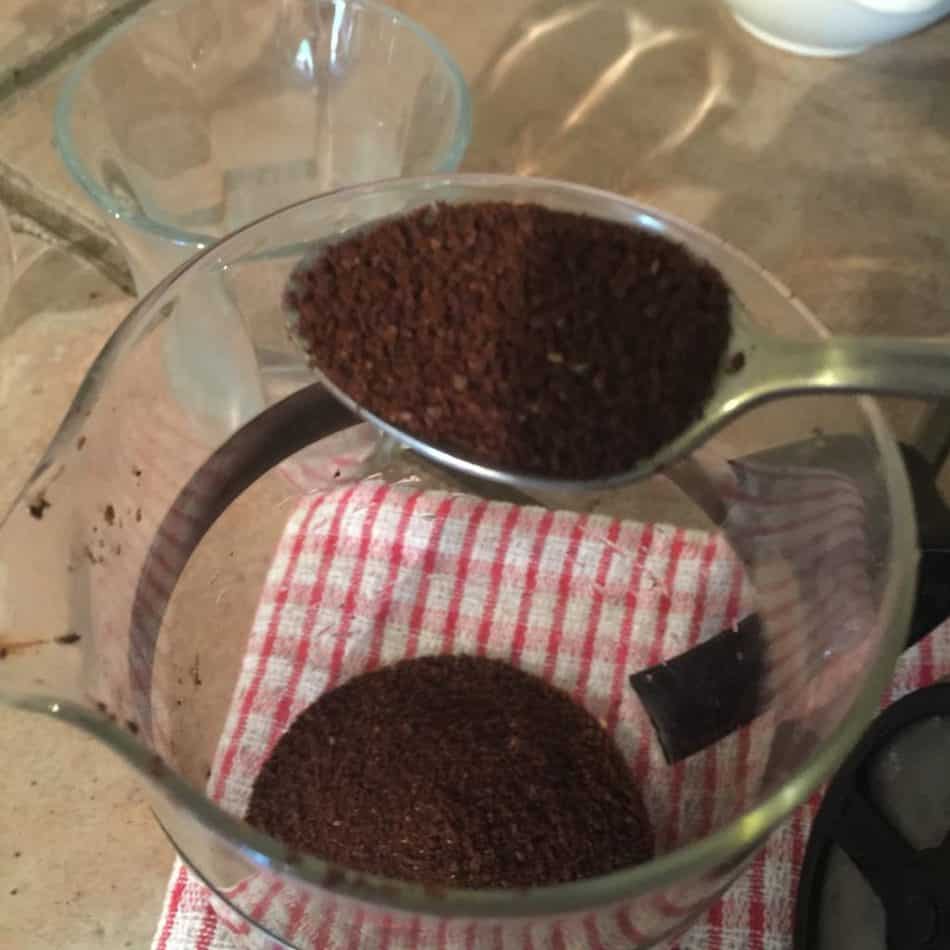
For you metric folks, use 11 grams of coffee for every 200 ml of water. In my example, my mug holds 300 ml, so 2 mugs equal 600 ml. That means I would use 33 grams of coffee.
Now What
“Now what” is that it is time to adjust your ratios to your own taste! While coffee brewing relies on a bit of chemistry, enjoying coffee is more art than science. The secret is to be as consistent as possible with your brewing technique and only change one thing at a time.
If you like your coffee stronger than what you got the first time, then add a little more ground coffee to your brew! Lucky for you, you have a lifetime of coffee drinking ahead to hone in on the “Perfect Ratio for You.” See? Coffee does not need to be complicated to be good.
Conclusion
Your main takeaway from this article should be that a good rule of thumb for coffee brewing is one teaspoon of coffee for each ounce of water. With a systematic approach and bit of time spent at the beginning, you can brew a French press pot as well as anybody.
For more on French press coffee, search Procaffeination.com. You might also like Why is my French press Plunger Hard to Push and 21 Easy Hacks to Instantly Improve Your Coffee at Home

Good coffee is easy!
